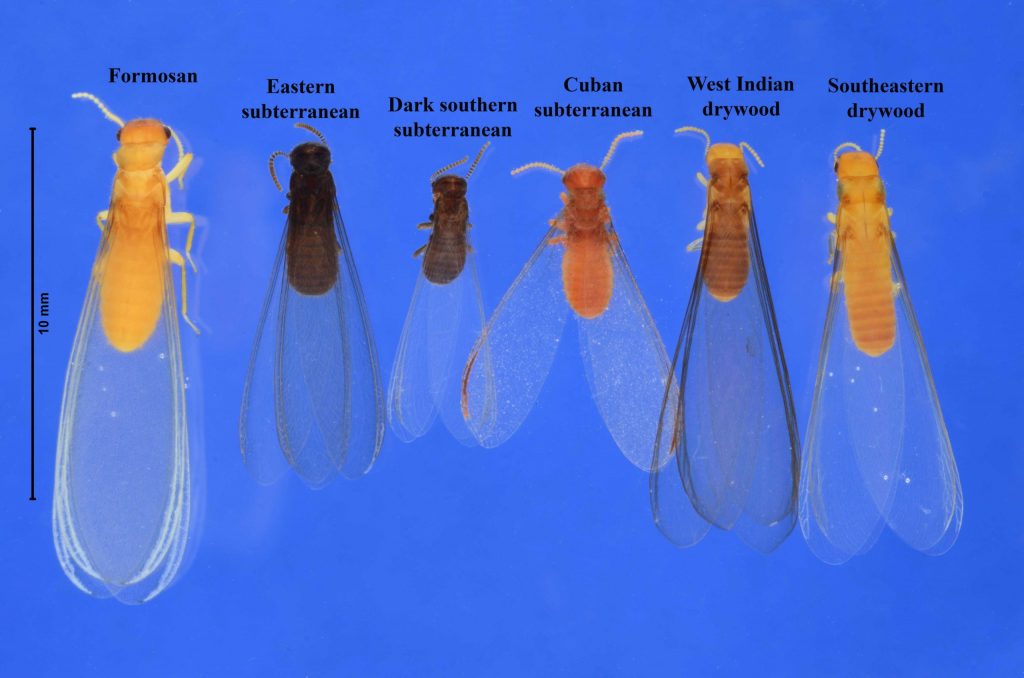Termites are a common pest found throughout Florida. They can cause extensive damage to homes and other structures, making it important to identify and control them. In this article, we will discuss the different types of termites found in Florida, how to identify them, and the most effective methods of controlling them.
Types of Termites in Florida
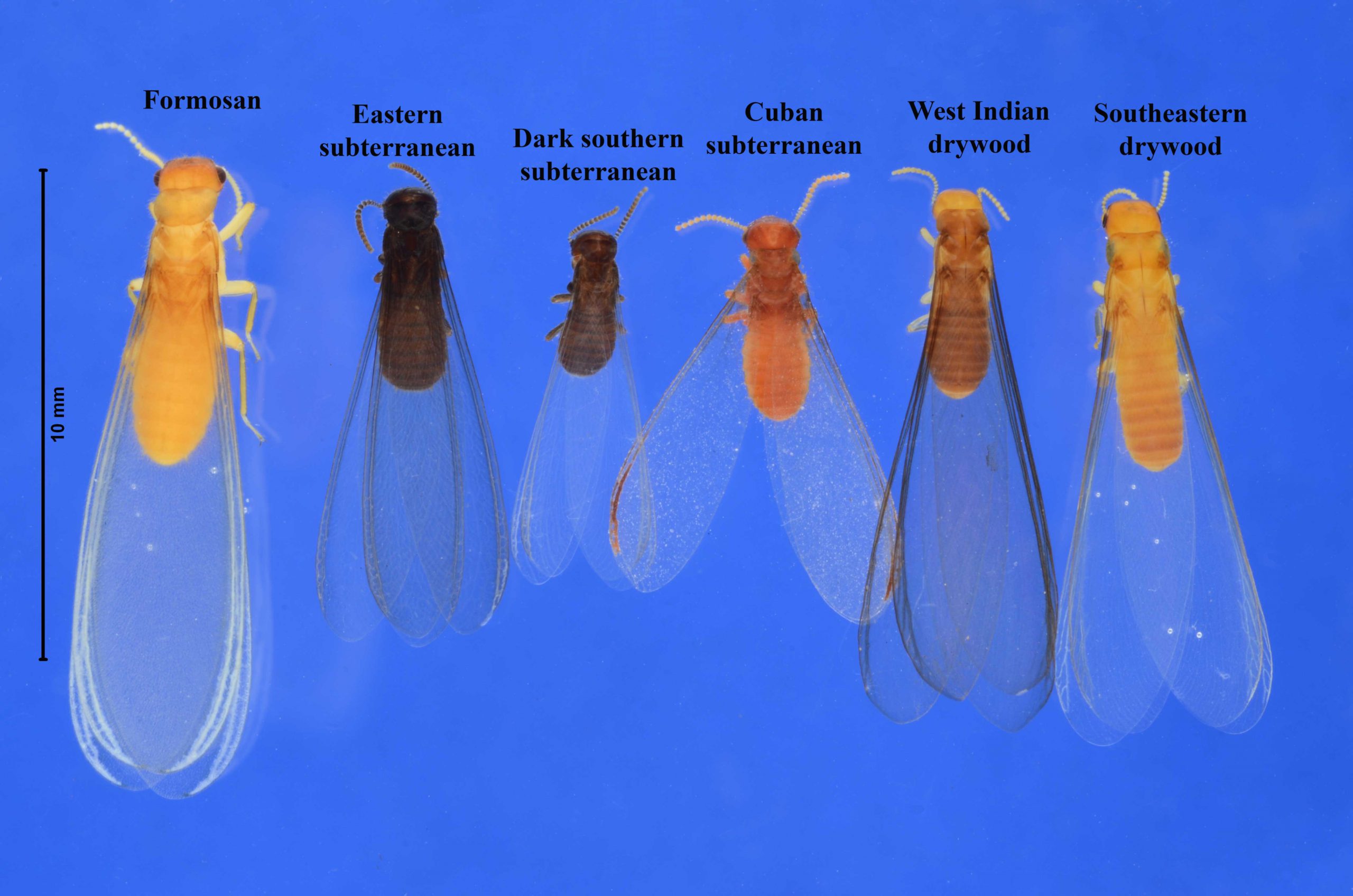
1. Subterranean Termites
Subterranean termites are the most common type in Florida and often cause the most damage. They live in underground colonies and build mud tunnels to gain access to food sources above the ground. Subterranean termites feed on wood and other cellulose materials, such as paper and cardboard.
2. Drywood Termites
Drywood termites live and feed on wood, usually in attics, decks, and other dry, warm areas. They do not require access to the soil for moisture, which makes them more difficult to control. These termites are responsible for wood damage in homes and furniture.
3. Formosan Termites
Formosan termites are an invasive species in Florida and can cause significant damage to homes and other structures. They are often found in coastal regions, but can be found in other areas as well. Like other termites, they feed on wood and other cellulose materials.
Signs of Termites in Florida
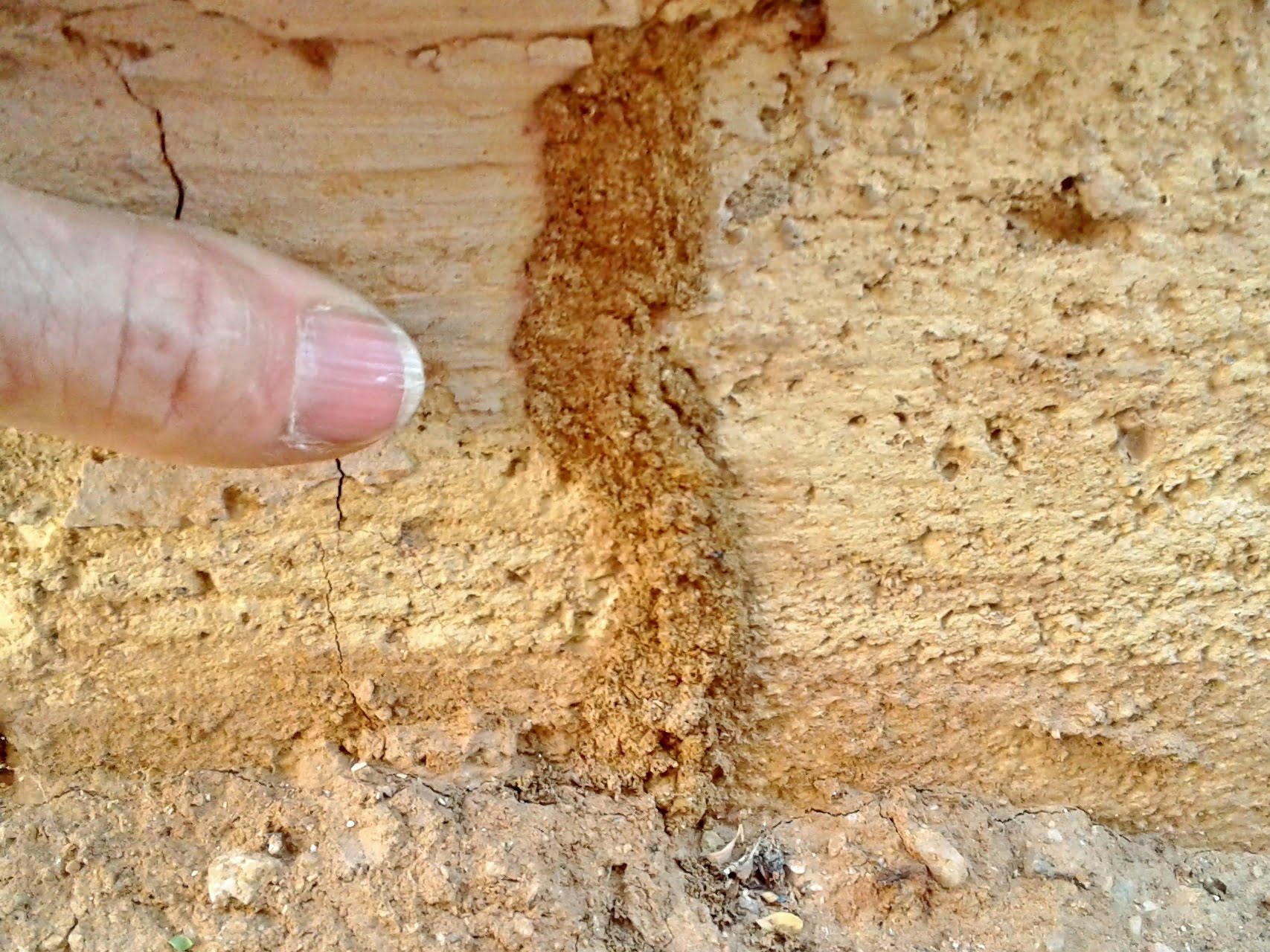
- Mud tubes on the exterior walls or foundation
- Piles of discarded wings near windowsills and doors
- Swarmers or flying insects in and around the home
- Soft or hollow-sounding wood in the home
- Discolored or drooping drywall
- Small holes in wood surfaces
- Buckling paint or wallpaper
- Frass (wood-colored droppings) near infested areas
Prevention of Termites in Florida
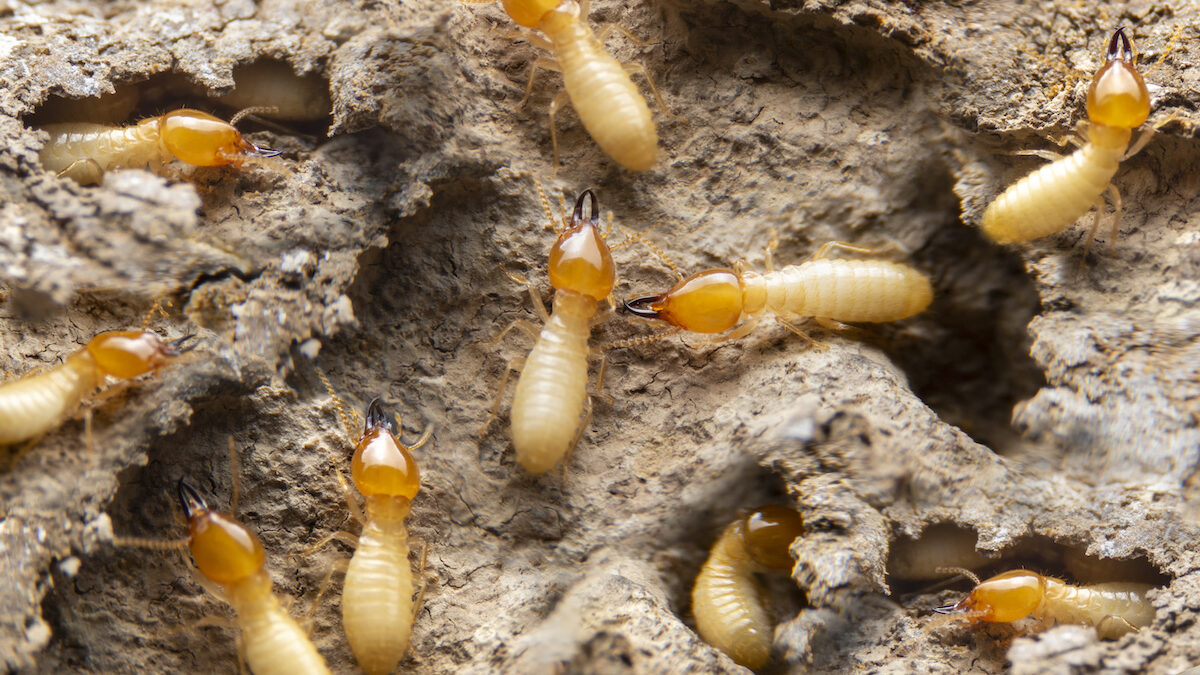
The best way to prevent termites in Florida is to take proactive measures. It’s important to inspect your property regularly for signs of termite infestation, such as mud tubes or swarms of flying termites. Homeowners should also have their property inspected for termites by a pest control professional every year.
Other preventive measures include:
• Repair water leaks or plumbing problems around the home as soon as possible, as termites need moisture to survive.
• Remove any wood debris from around the home, such as old stumps or fallen trees, as these can provide a food source for termites.
• Make sure to provide adequate ventilation in crawlspaces and attics.
• Avoid stacking wood piles directly against the home’s foundation.
• Seal cracks in the foundation and around windows and doors.
• Replace any wood that is in contact with the soil, such as deck posts or porch steps, with treated wood or other materials that are resistant to termites.
• Install a physical barrier around the home, such as a termite shield. This is a metal or plastic barrier installed between the soil and foundation of the home to prevent termites from entering.
Following these steps can help protect your home from termite infestations. Taking action now can save you time, money, and hassle later.
Treatment of Termites in Florida
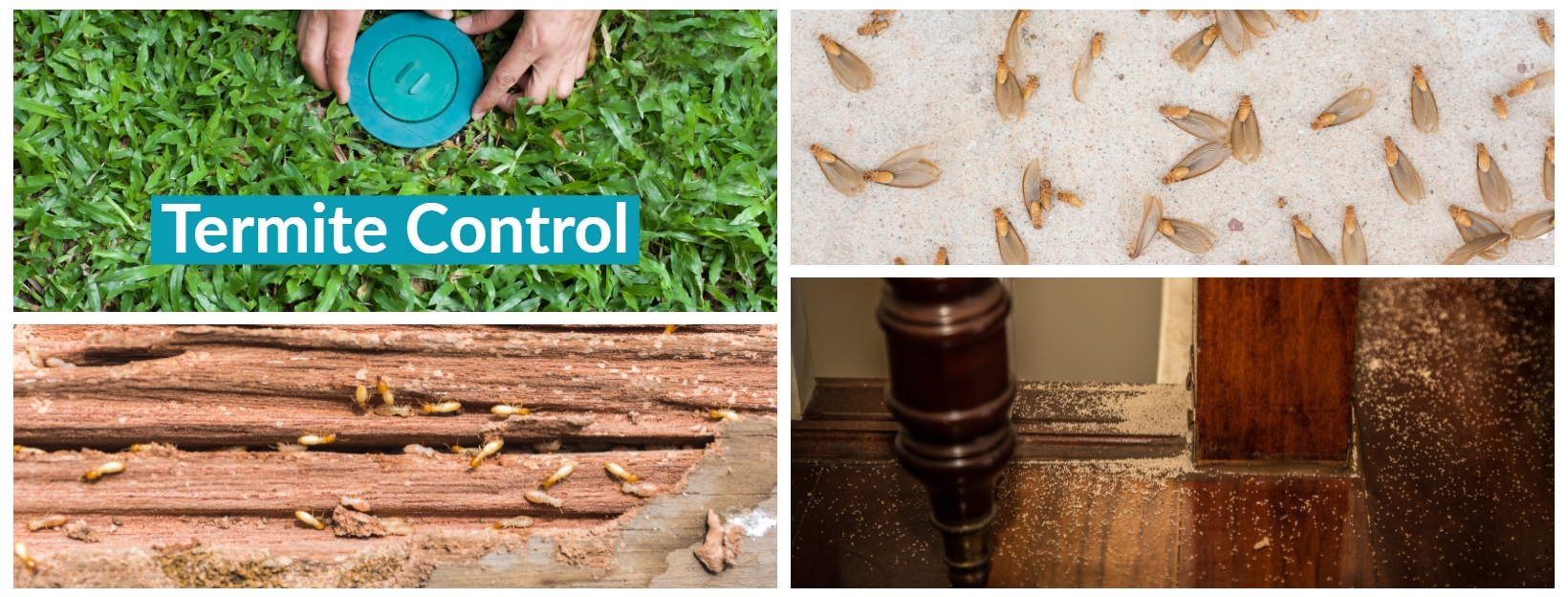
Termite Baiting
Termite baiting is an effective way to get rid of termites in Florida. Baits can be placed around the home, either in the ground or in bait stations. Once the termites feed on the bait, they will spread it to the rest of the colony, ultimately eliminating them.
Termite Barriers
Termite barriers are also effective in controlling termites in Florida. Barriers can be placed around the home to create a physical barrier that the termites cannot penetrate. This prevents them from accessing the home and causing damage.
3 Chemical Treatments
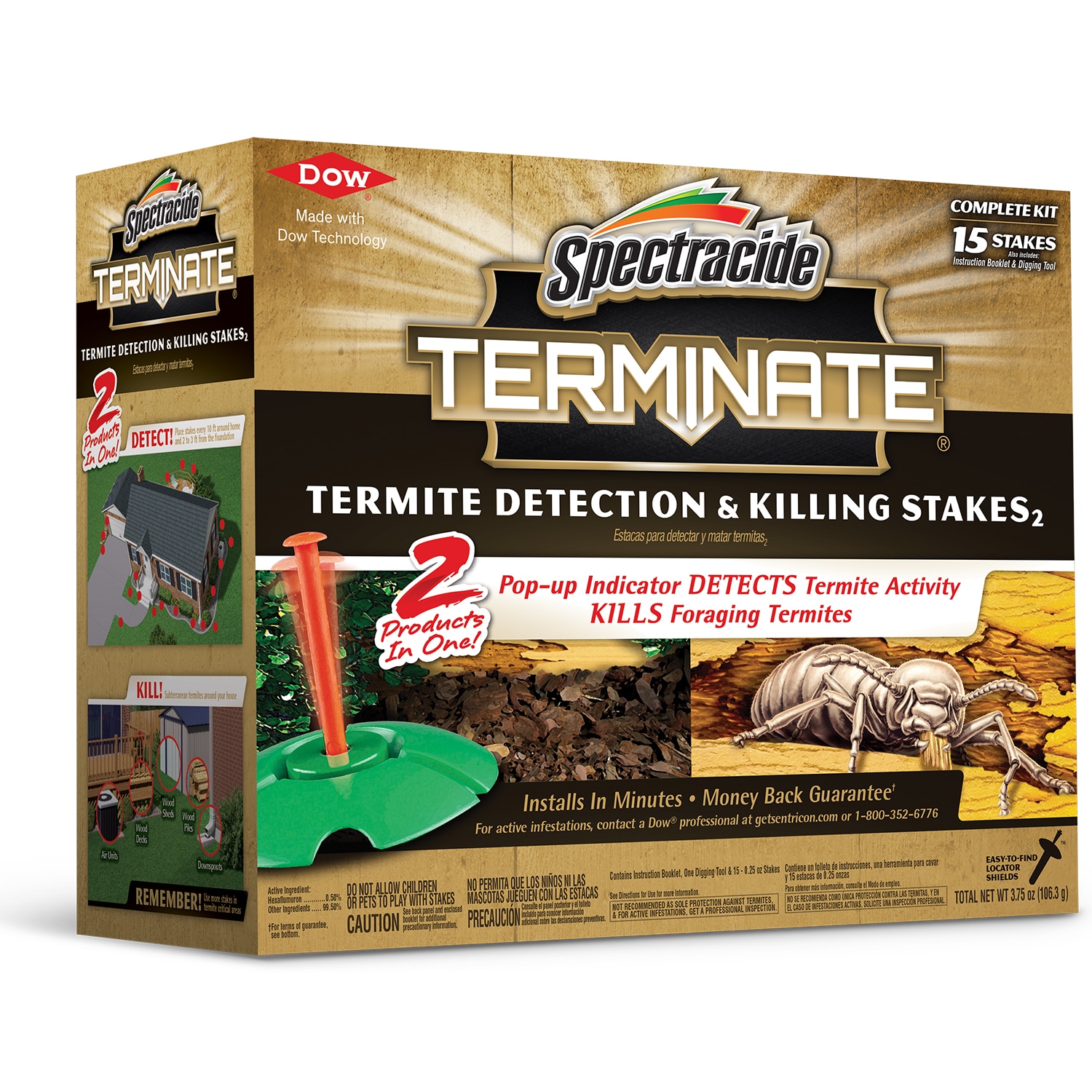
1. Fipronil: Fipronil is a non-repellent insecticide commonly used to treat termite infestations in Florida. It is applied to the soil before or around the foundation of the home, and is absorbed by the termites as they tunnel through the soil.
2. Chlorpyrifos: Chlorpyrifos is another non-repellent insecticide used to treat termite infestations. It is applied to the soil and works by creating a barrier between the termites and the foundation of the home.
3. Bifenthrin: Bifenthrin is a repellent insecticide commonly used to treat termite infestations in Florida. It is applied to the surface of the foundation and walls of the home, creating a barrier to prevent termites from entering the home.
Professional Termite Control Services
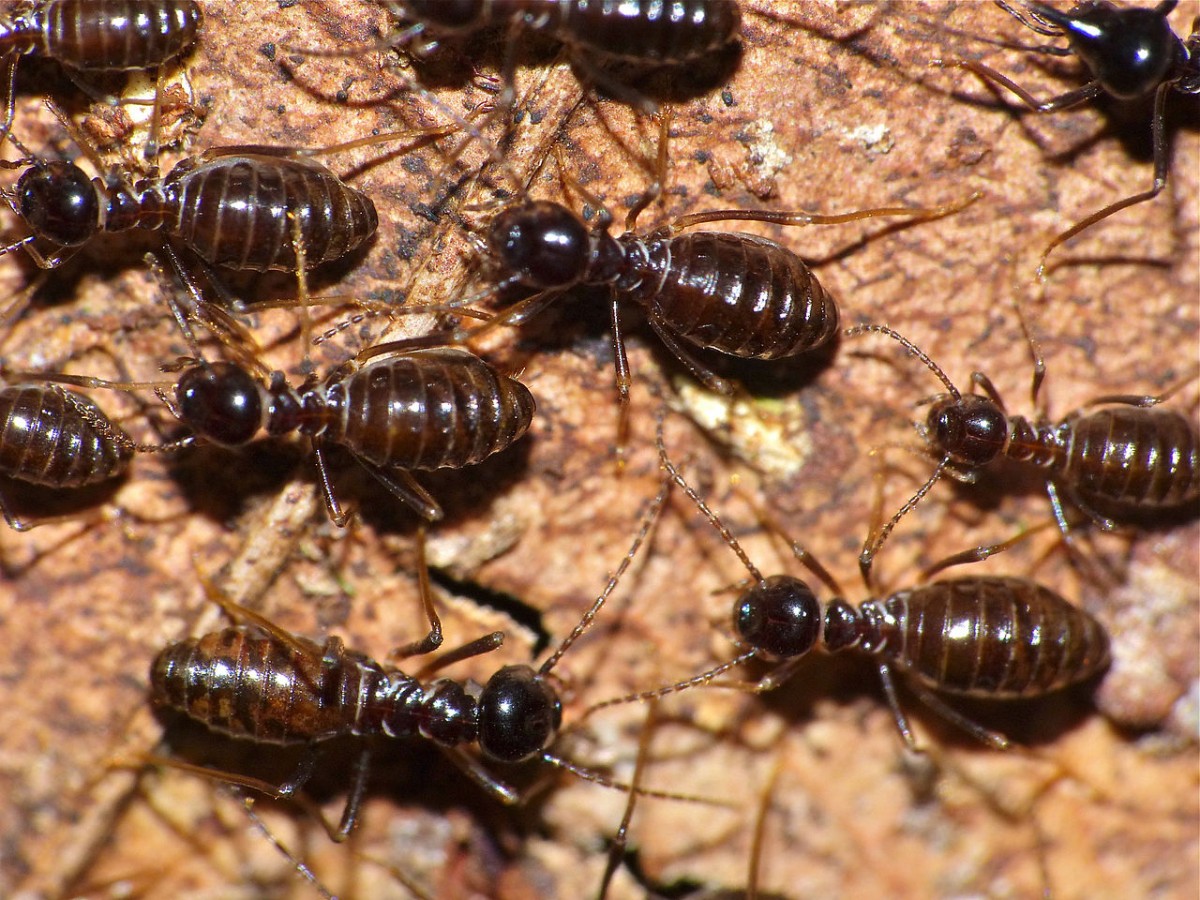
Professional termite control services can help to ensure that your home or business is free from termites. These services can include inspections, treatments, and repairs. Inspections are typically done on a regular basis to look for signs of termite infestation, such as mud tubes and broken wood. Treatments are used to eliminate any existing infestations, while repairs are necessary to repair any damage caused by termites. Professional termite control services can also provide preventative measures to help prevent future infestations. These measures can include sealing cracks and crevices in the structure, installing termite-resistant materials, and providing regular maintenance to keep the area dry and free from moisture.
DIY Termite Control
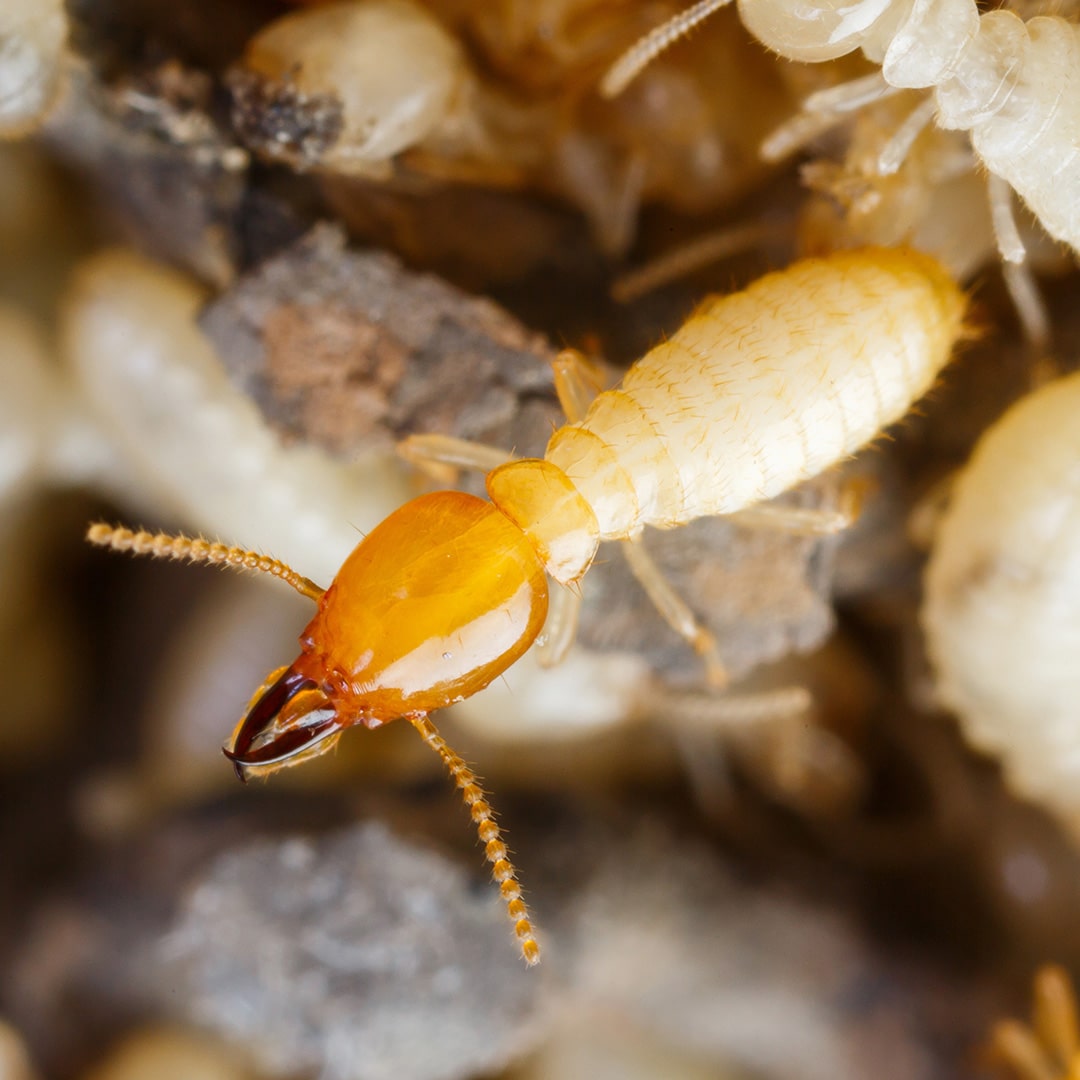
- Inspect the property for any visible signs of termites – such as mud tubes and damaged wood.
- Remove any deadwood and debris from the property.
- Eliminate moisture sources such as poor drainage, plumbing leaks and air conditioner condensation.
- Repair any damaged wood and replace caulking around windows and doors.
- Install a termite barrier around the perimeter of the property.
- Install screens over vents, windows and doorways.
- Install underground bait stations around the perimeter of the property.
- Check bait stations regularly and refill with bait as needed.
- Monitor the property regularly for signs of termite activity.
The Cost of Termite Control in Florida
Termites can cause extensive damage to homes in Florida, so it is important to invest in termite control to prevent costly repairs and replacements. Homeowners in Florida should be aware of the cost associated with termite control, and the various methods of prevention and treatment.
Preventative Control
One of the most cost-effective ways to protect a home from termite infestation is to invest in preventative control measures. Homeowners can opt for termite baiting systems, which are placed around the perimeter of the home and act as an early warning system for termites. The baiting systems attract termites, which are then killed before they can reach the home and cause damage. The cost of installing a termite baiting system can range from $2,000 to $4,000, depending on the size of the property and the number of baiting systems needed.
Treatment for an Infestation
If an infestation is detected, the homeowner will need to invest in treatment to get rid of the termites. Treatment options vary, depending on the size and type of infestation, and the type of termite. Treatment can range from $1,000 to $3,000, depending on the severity of the infestation.
Additional Costs
In addition to the cost of prevention and treatment, homeowners may also need to factor in additional costs such as repairs, replacement of damaged wood, and structural repairs. These costs can vary significantly, depending on the extent of the damage, and can add up quickly.
Summary of Costs
| Type of Cost | Cost Range |
|---|---|
| Termite Baiting Systems | $2,000 – $4,000 |
| Treatment for Infestation | $1,000 – $3,000 |
| Repairs & Replacement of Damaged Wood | Varies |
| Structural Repairs | Varies |
In conclusion, the cost of termite control in Florida can vary significantly, depending on the type of prevention and treatment needed. Homeowners should be aware of the potential costs associated with termite control, and invest in preventative measures to avoid costly repairs and replacements.
The Legal Aspects of Termite Control in Florida
In Florida, the Department of Agriculture and Consumer Services (FDACS) is responsible for regulating and licensing pest control companies that offer termite control services. To be licensed, companies must demonstrate knowledge of termite control and treatment methods, as well as pass a licensing exam. The FDACS also regulates the use of pesticides, including those used for termite control.
In addition, it is important for homeowners to be aware of the warranties and guarantees offered by pest control companies. Most companies provide warranties that cover damage caused by termites. The warranties will vary in length and coverage, so it is important to ask the company for details.
Finally, it is important to note that termite control is a highly regulated industry. Homeowners should always make sure that the pest control company they hire is properly licensed and insured. This will ensure that the company is held accountable for any damage caused by their services. Additionally, homeowners should always read the label of any pesticide used for termite control, as it may have additional safety or legal requirements that must be followed.
Frequently Asked Questions
What are the signs of subterranean termites in Florida?
Subterranean termites are common in Florida and can cause extensive damage to homes and other structures. Signs of an infestation include mud tubes on the exterior of the structure, wings and swarmers on windowsills or near doors, and frass (termite droppings) near windows and doors. Wood that is hollowed out or damaged, and sounds of rustling and clicking within walls can also indicate a termite infestation.
What are the most effective ways to control termites in Florida?
The most effective methods of termite control in Florida include chemical treatments, baiting systems, and moisture control. Chemical treatments involve applying a termiticide directly to the soil around the foundation of the structure to create a barrier that termites cannot cross. Baiting systems involve placing station bait boxes filled with an insecticide-laced material in the ground around the structure. The termites eat the bait and carry it back to the colony, eliminating the colony over time. Moisture control involves eliminating sources of moisture that termites need to survive, such as faulty plumbing, poor drainage, and other water-related issues.
How can I tell if I have a termite problem in my Florida home?
Signs of a termite infestation include mud tubes, wood damage, and swarms of winged insects. Homeowners should look for cracked or bubbling paint, as well as small piles of sawdust near wooden surfaces. Additionally, listening for the sound of termites eating through the wood in walls or furniture can be a sign of an infestation. If termites are suspected, it is important to contact a licensed pest control professional for a thorough inspection.
What preventive measures can I take to avoid a termite infestation in Florida?
To prevent a termite infestation in Florida, homeowners should be aware of the three main types of termites found in the state: subterranean, drywood, and Formosan. Homeowners should also inspect their home for signs of termite damage and regularly remove any sources of wood-to-soil contact, such as decks and firewood piles. Homeowners should also ensure that their property is well-drained and that gutters, downspouts, and other drainage systems are in proper working order. Finally, homeowners should have their home regularly inspected by a pest control professional to detect any potential infestations.
How can I identify if the termites in my Florida home are subterranean termites?
Subterranean termites typically require contact with soil in order to survive. Therefore, they are most commonly found in the ground, or in wood in contact with the ground. These termites create mud tubes, which they use to travel between the soil and their nest. Other signs of subterranean termites include damaged wood, which will have a honeycomb pattern on the surface. Additionally, subterranean termites produce small, oval-shaped droppings, which can be found near their nests or mud tubes.
Conclusion
Identifying and controlling termites in Florida can be a challenge. However, with the right knowledge, tools, and techniques, anyone can learn how to control these pests. Regular inspections and treatments can help keep termite populations in check and prevent costly structural damage to homes and other buildings. Professional pest control services can also help manage and control termite populations.

